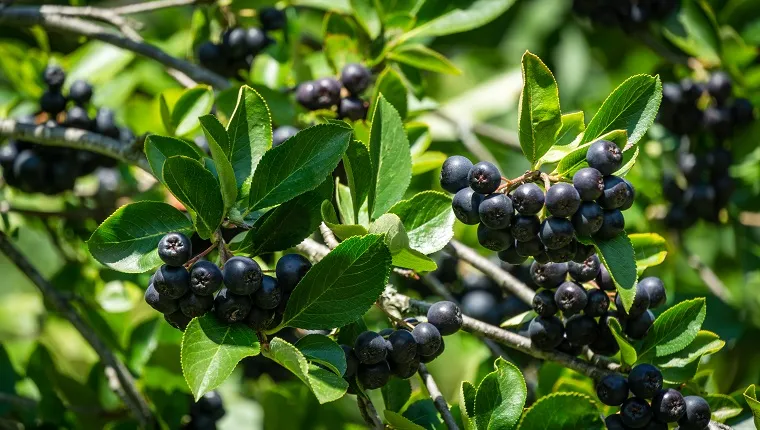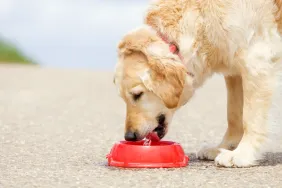Even the name “chokeberry” doesn’t sound terribly appealing, but can dogs eat chokeberries? We see their shrubs when we’re out on hikes, or even in public parks, but are these berries safe for dogs to actually ingest? Or even humans, for that matter?
The short answer is no; chokeberries are not safe for dogs to consume. In fact, the risk of consumption may outweigh the meager health benefit for humans, as well. Plus, they’re apparently sour and not at all tasty. Your dog would probably see it as a punishment, more than anything.
Chokeberries contain many seeds, all of which are rich in cyanide. Birds can easily remove the tiny seeds from the berries, but for humans and dogs, it’s just not worth it.
As always, discuss what your dog should eat with your veterinarian before feeding your pet any new foods or allowing them to eat what they find outside. Here’s what you should know about dogs and chokeberries.
Why Are Chokeberries Bad For Dogs?
Chokeberries hail from the Prunus Virginiana tree or shrub, which grows quite abundantly throughout North America. They’re closely related to black cherries, but not close enough for human taste buds. Unfortunately, though, the taste isn’t the real issue for you or your dog.
Along with peach and apricot pits, as well as the seeds of apples, cherries, pears, and plums, chokeberry seeds contain cyanide. Trace amounts are manageable, but a dog’s mouthful of chokeberries can be incredibly toxic to them. They’re tiny berries found in big bunches.
Given how small they are, and their density of seeds, they’re also just too much trouble. To glean any semi-risk-free benefit from them, you’d have to do quite a lot of work. And even if you decided to be quite bird-like in doing this work, your dog could still have an allergic reaction.
Bottom line is, chokeberry poisoning in dogs almost always occurs when dogs eat chokeberries.
What Should I Do If My Dog Ate Chokeberry?

When dogs consume chokeberries, symptoms occur quickly. In some cases, they appear right away, but sometimes they appear within a few hours, depending on the breed and size of your dog.
Dogs suffering from cyanide poisoning often show the following symptoms:
- Abnormal Heart Rate
- Confusion
- Collapsing
- Convulsions
- Hyperventilation
- Seizures
- Tremors
If you happen to notice your dog consuming chokeberries, be swift. Don’t wait for symptoms to arise, as the prognosis only grows worse with time. While dogs often make a full recovery from cyanide poisoning, it can be fatal. Seek veterinary care as soon as possible.
If you live in an area where chokeberries are prominent, be sure to keep your dog’s outside routine far from them. Petitioning or asking permission to remove the shrubs is often approved, as well. If this isn’t an option, make a plan with your veterinarian ahead of an incident.
Do you live in an area where chokeberries grow? Do you make sure to keep your dog away from them? Let us know in the comments below.









